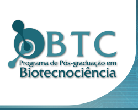Banca de DEFESA: JAIME LUIS VASQUEZ ZAMORA
Uma banca de DEFESA de MESTRADO foi cadastrada pelo programa.STUDENT : JAIME LUIS VASQUEZ ZAMORA
DATE: 20/08/2024
TIME: 10:00
LOCAL: Sala 406 do Bloco B do Campus de Santo André da Universidade Federal do ABC
TITLE:
Nanocomposite of Au nanoparticles functionalized with L-cysteine on oxides
Graphene for biosensor applications
PAGES: 60
BIG AREA: Engenharias
AREA: Engenharia Biomédica
SUBÁREA: Bioengenharia
SPECIALTY: Processamento de Sinais Biológicos
SUMMARY:
Carbon materials are potential electrode materials for electrochemical biosensors due to their chemical inertness and low cost. GO graphene oxides (acronym for the English term Graphene Oxide) can be obtained by oxidizing graphite crystal through chemical and low-cost methods. The presence of these functional groups makes GO sheets strongly hydrophilic, allowing the integration of various types of inorganic nanoparticles to improve the performance of GO-based sensors. Biosensors are important tools for diagnosing diseases and detecting biological agents in the environment. In particular, electrochemical biosensors are very attractive and promising due to their high sensitivity, high signal-to-noise ratio, relative simplicity and fast response time. An electrochemical biosensor is an analytical device that interprets biochemical events such as an enzyme-substrate, antigen-antibody reaction, among others, into electrical signals. In this work, GO samples were synthesized using the modified Hummer Method. The GO was freeze-dried and characterized by DLS, Zeta potential, XRD, Raman, FTIR, XPS and SEM techniques, which were compared with the characterizations of the natural graphite matrix. The synthesized GO was used to create a nanocomposite for which other precursors were used, such as: tetrachloroauric acid, and an amino acid L-cysteine, which has been reported as an excellent green reducer both to create gold nanoparticles and to reduce GO, This nanocomposite was synthesized and characterized using UVVIS, spectrofluorimetry, Zeta Potential DLS, Raman, XRD, FTIR, SEM and TEM techniques. After being evaluated, it was used on a biosensor platform as part of the working electrode, to later study the detection potential in electrochemical biosensors for E. coli bacteria. Electrochemical measurements, such as cyclic voltammetry and chronoamperometry, show the potential of this nanocomposite in the manufacture of biosensors.
COMMITTEE MEMBERS:
Presidente - Interno ao Programa - 1676360 - ANA MELVA CHAMPI FARFAN
Membro Titular - Examinador(a) Interno ao Programa - 1762438 - JEAN JACQUES BONVENT
Membro Titular - Examinador(a) Externo à Instituição - PRISCILA CORREIA FERNANDES - ITA
Membro Suplente - Examinador(a) Interno ao Programa - 1941387 - FERNANDA DIAS DA SILVA
Membro Suplente - Examinador(a) Externo ao Programa - 1646041 - CARLOS TRIVENO RIOS




